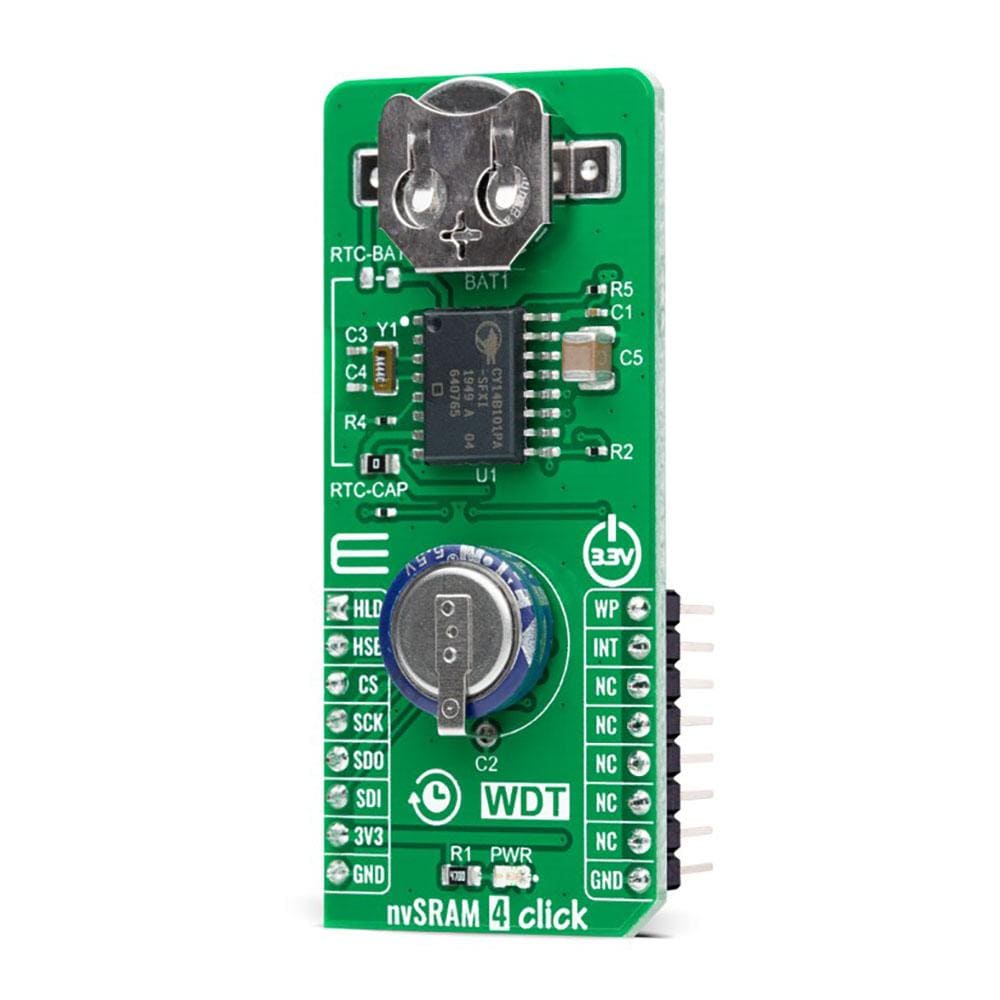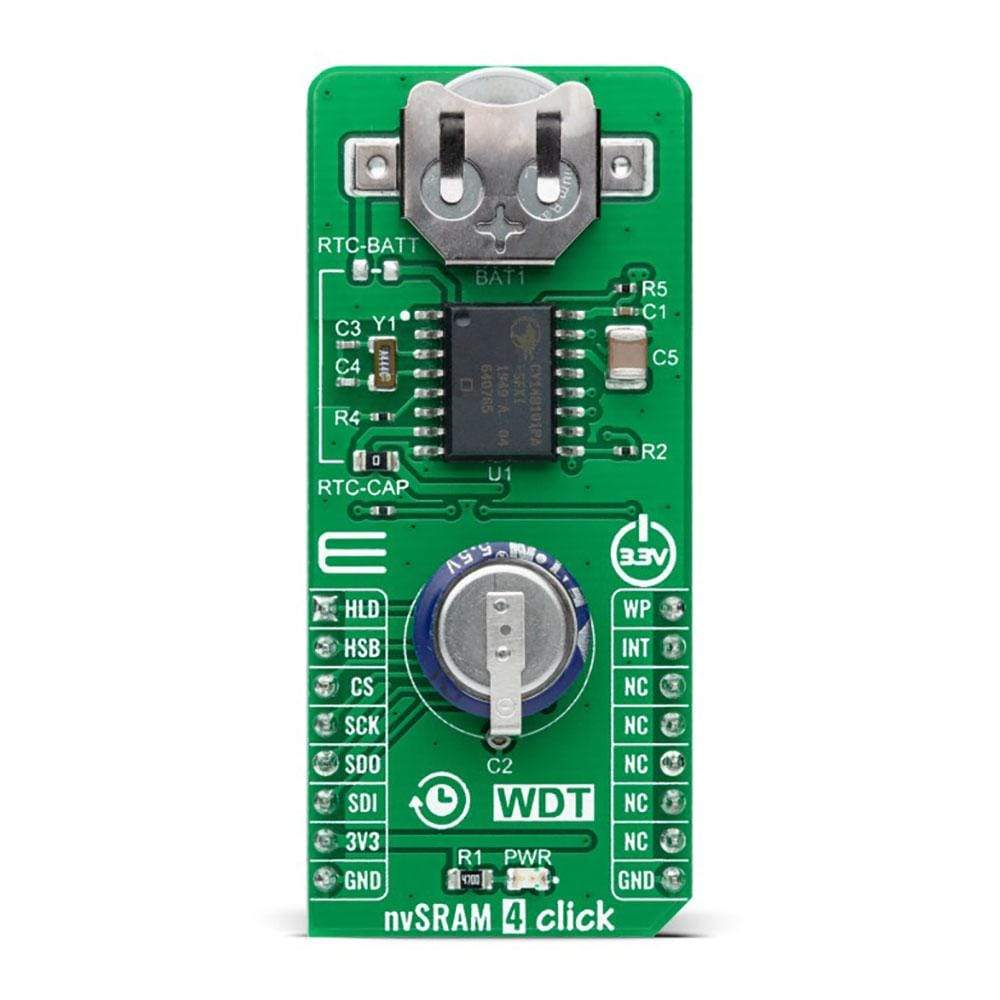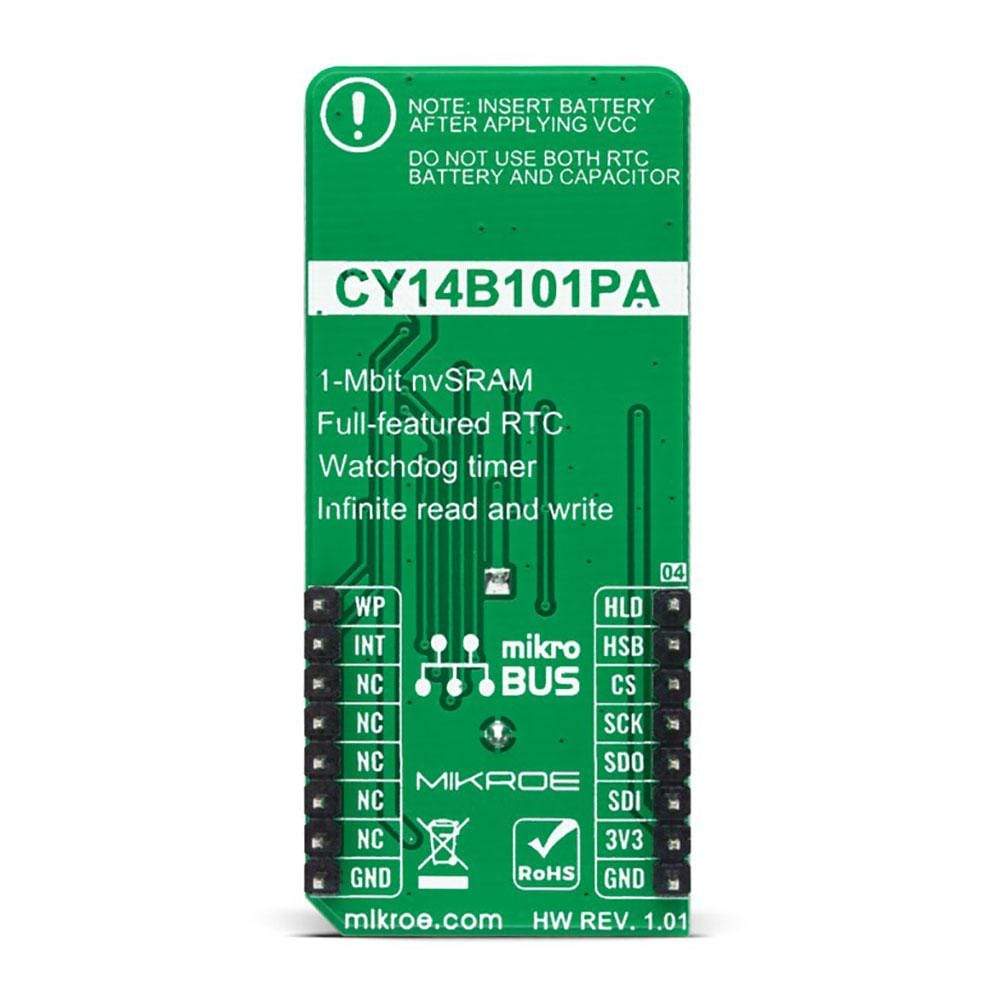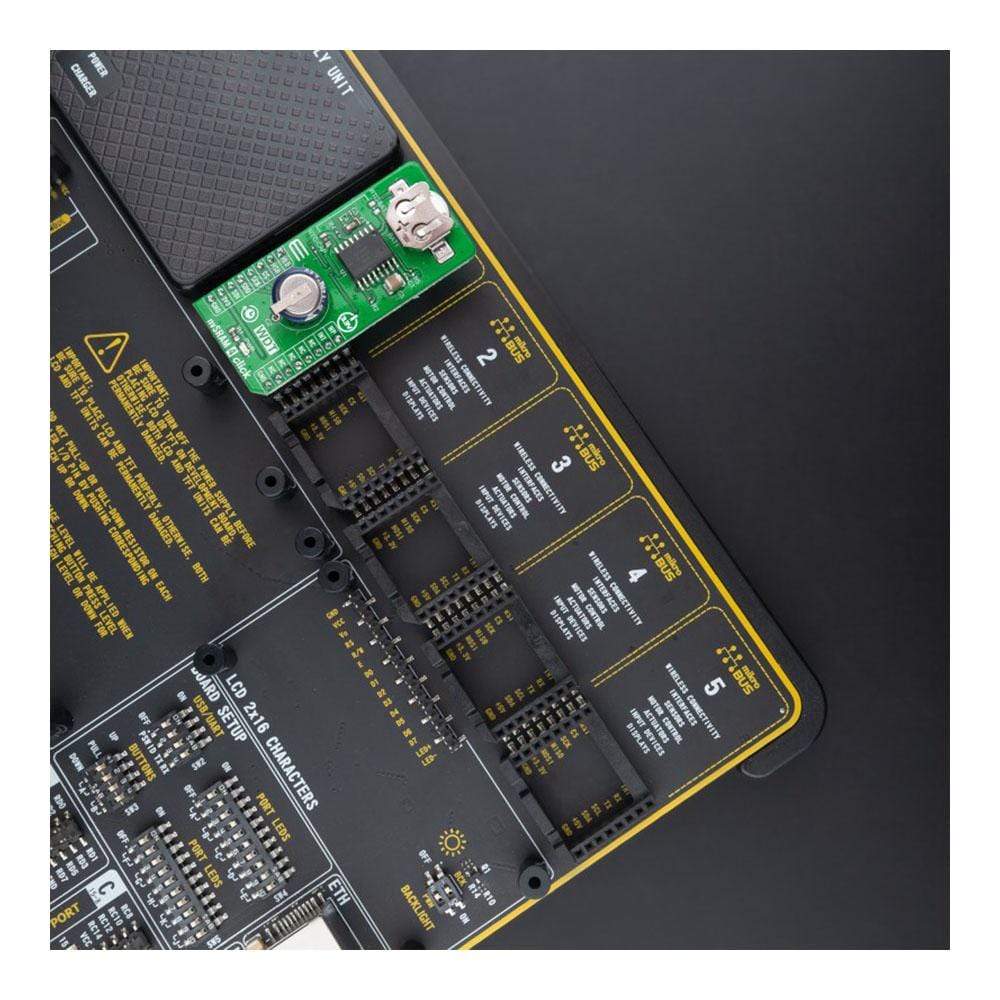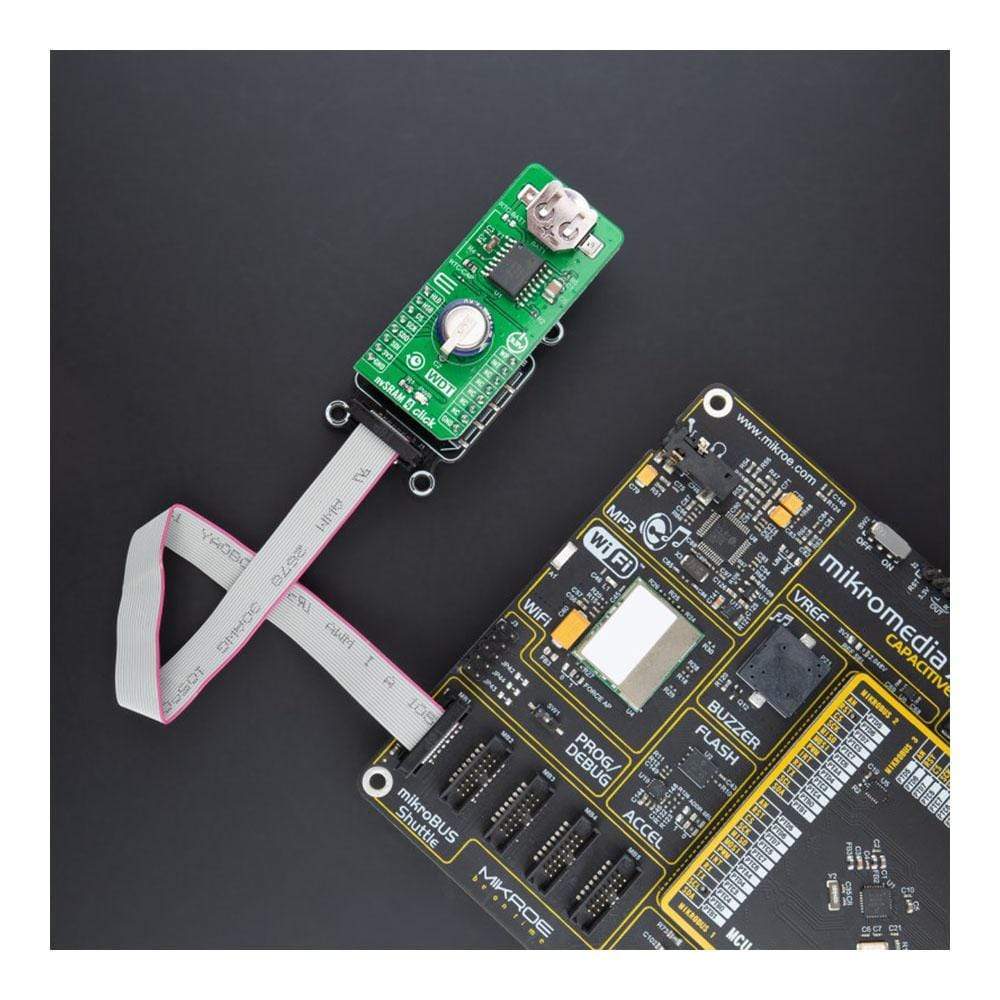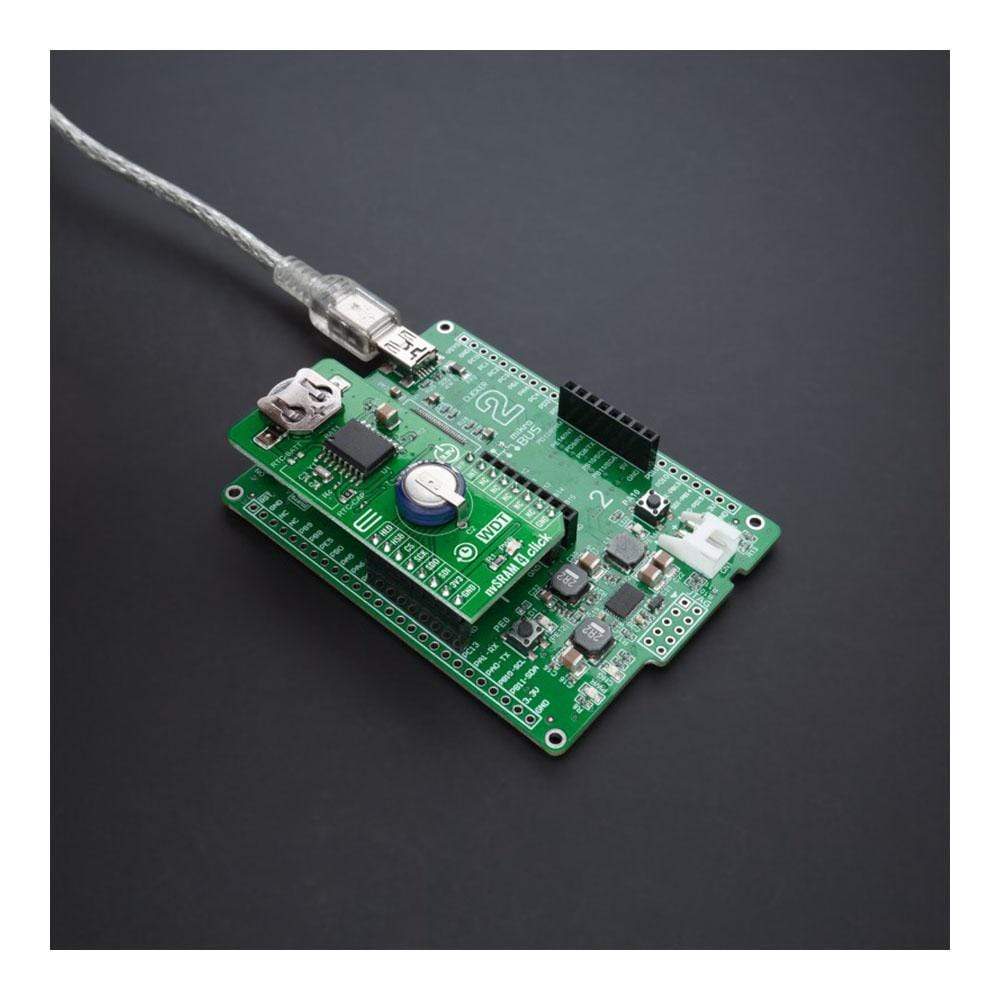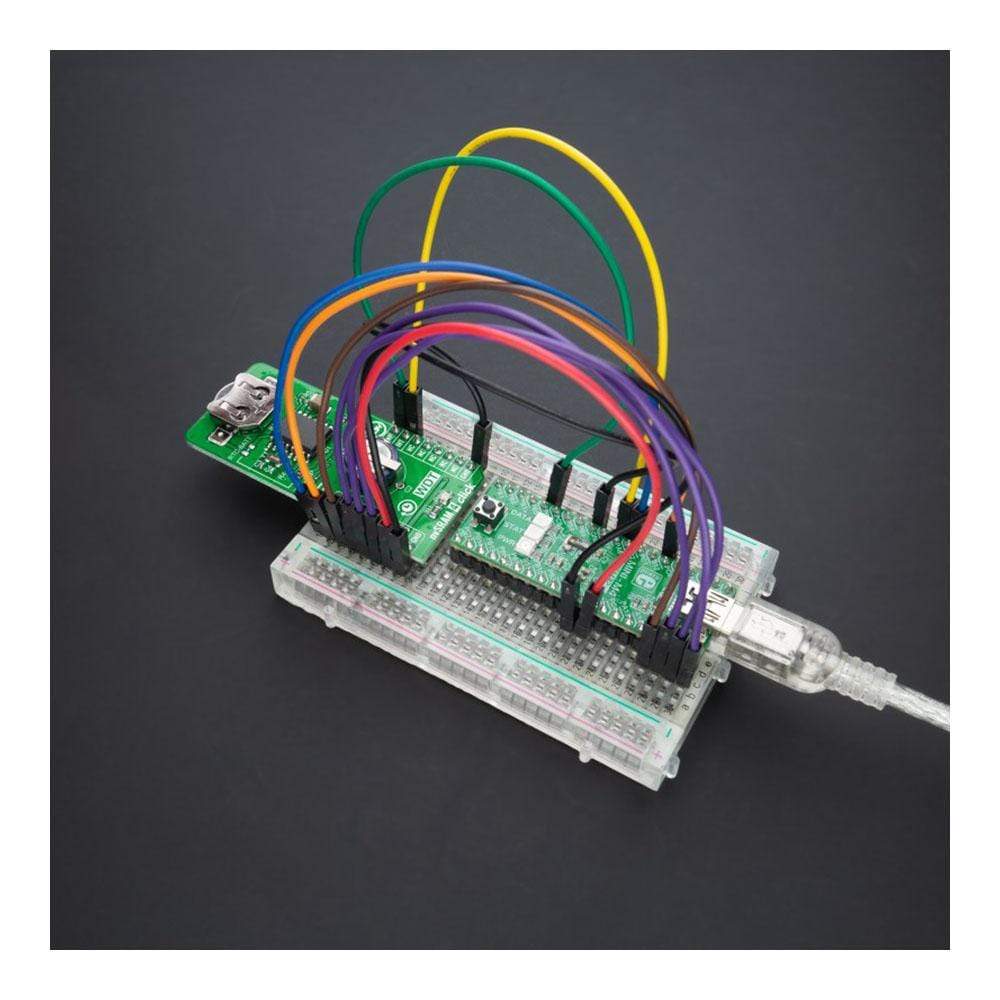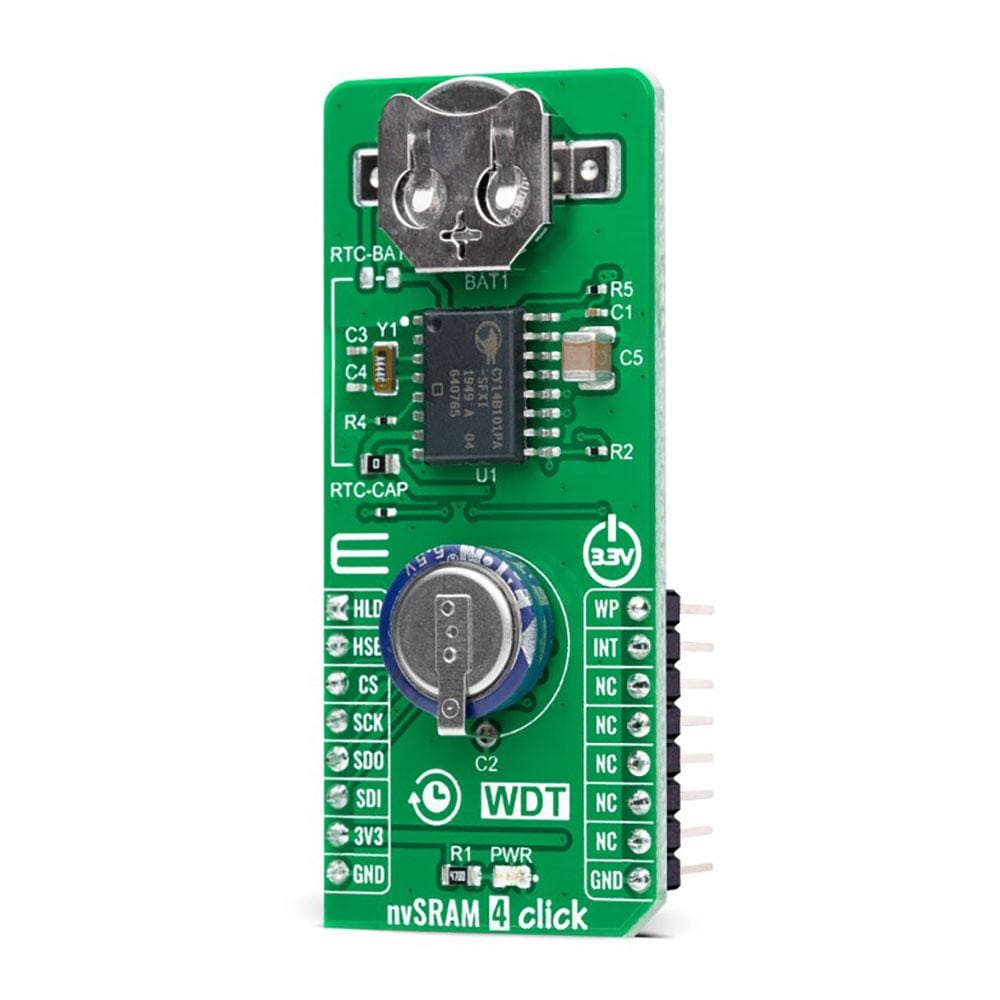
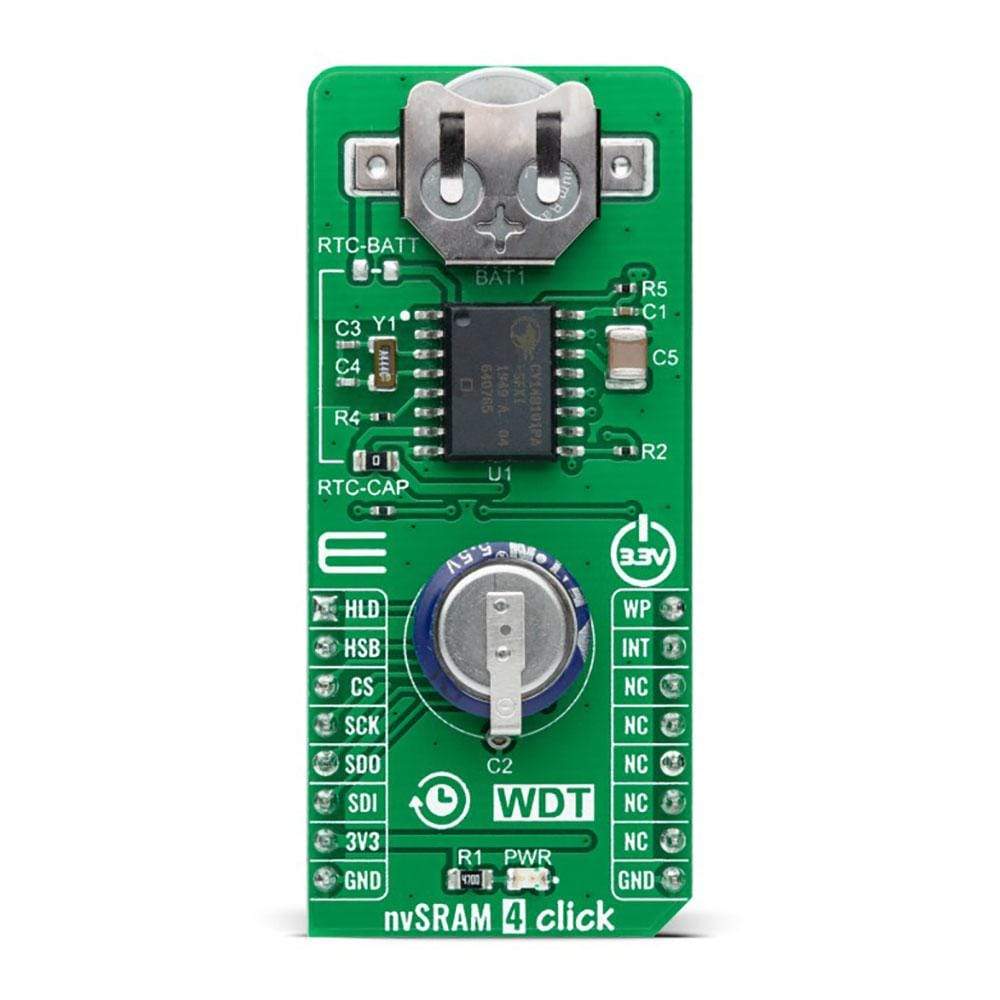
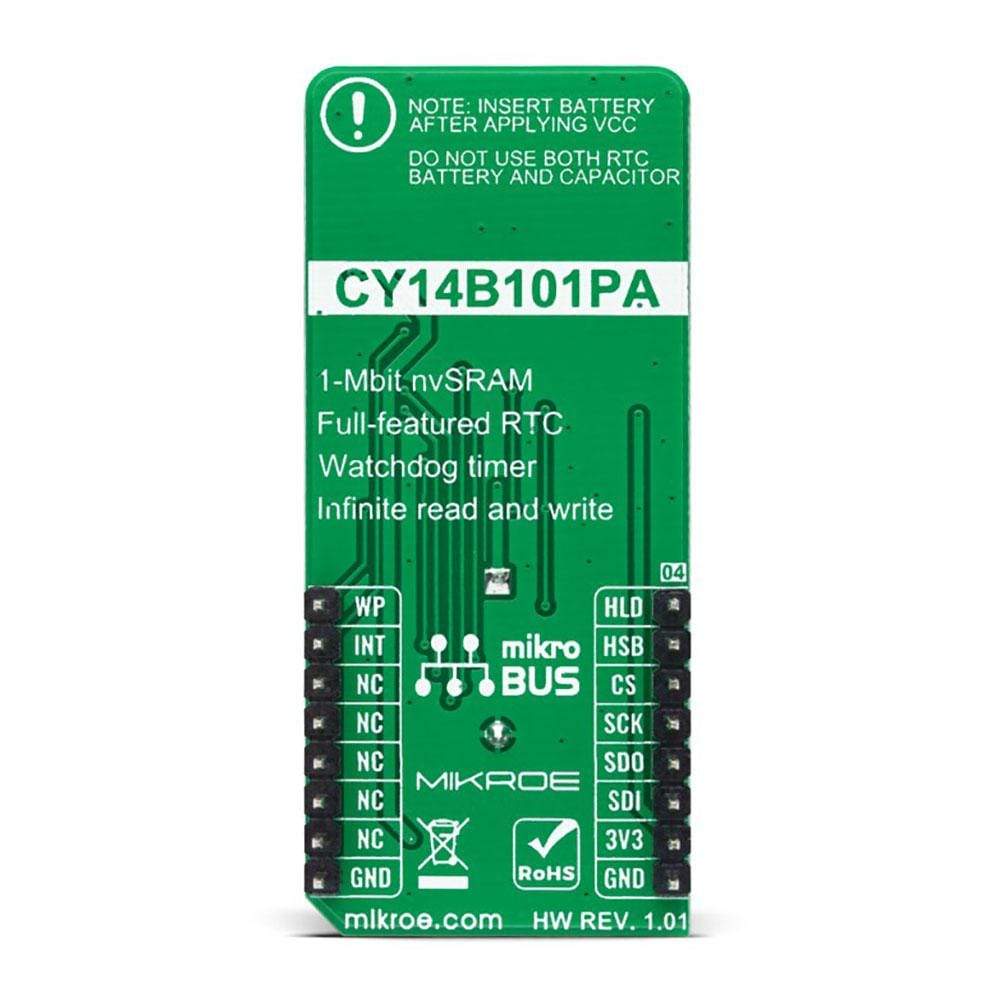
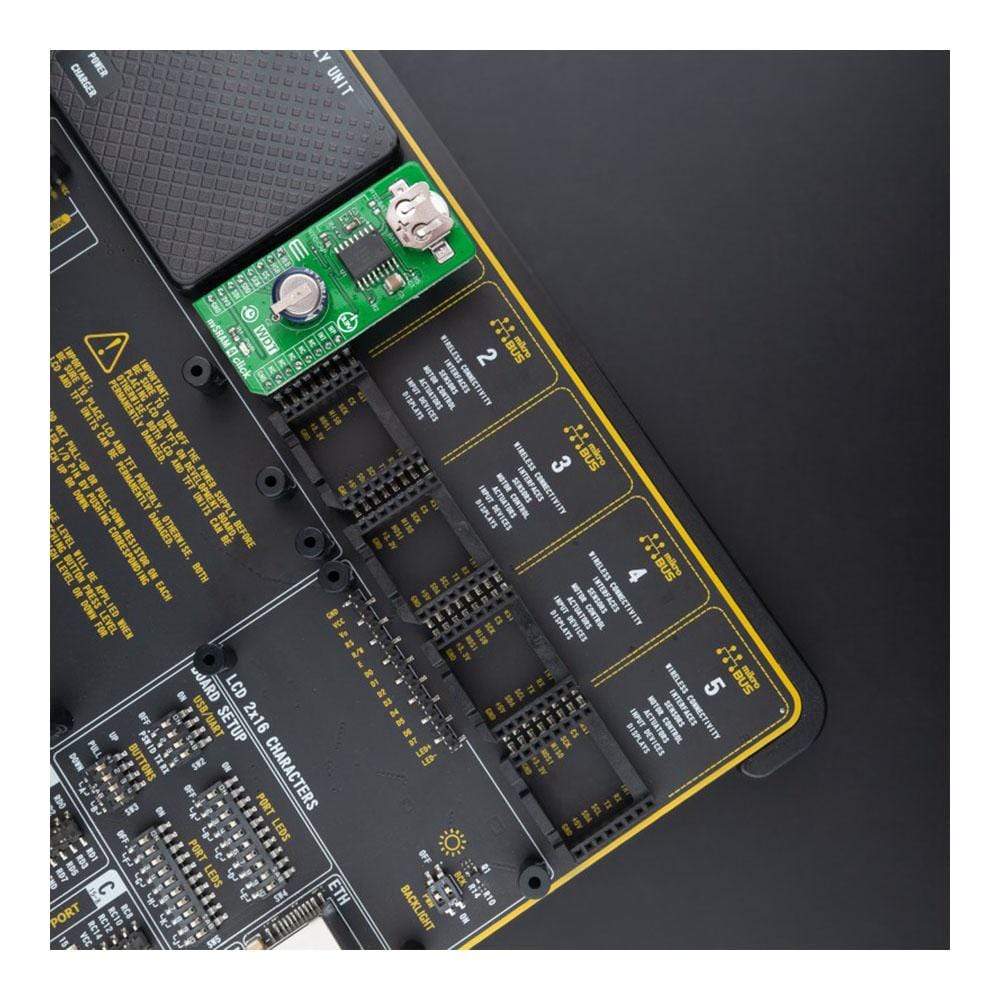
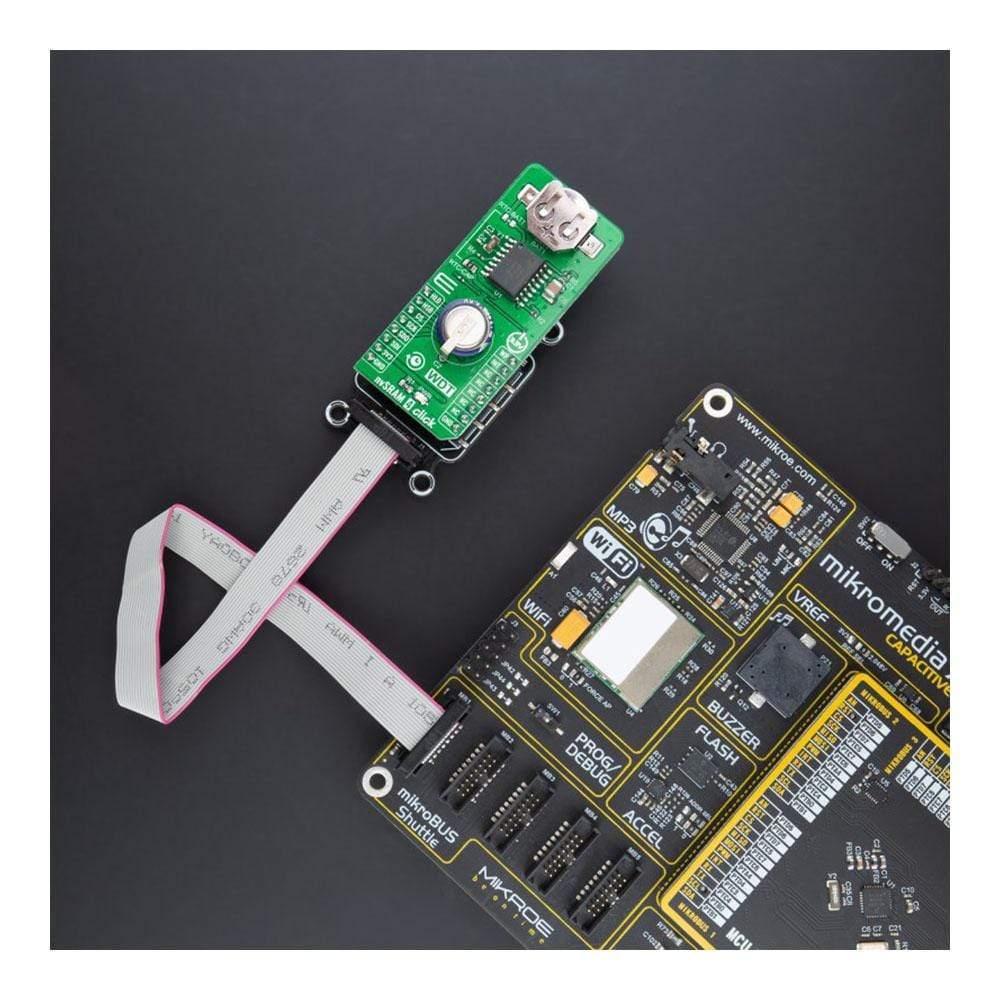
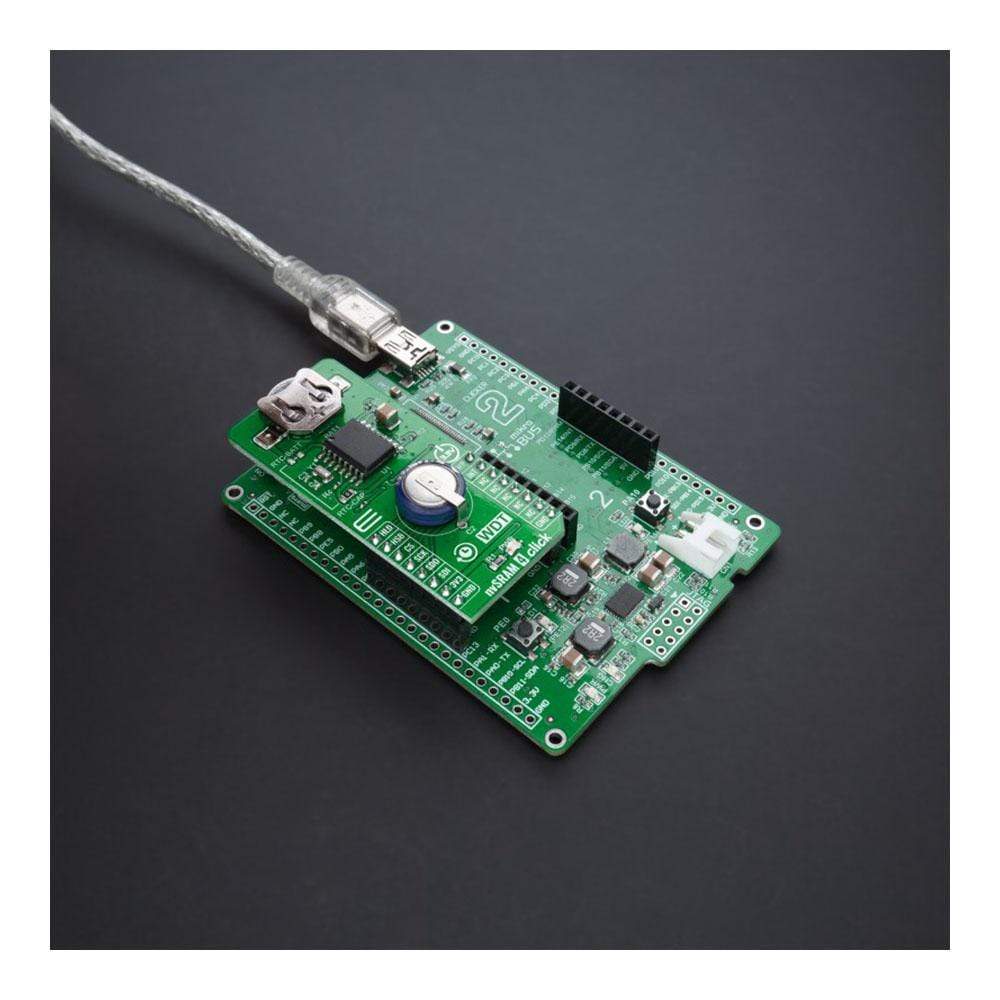
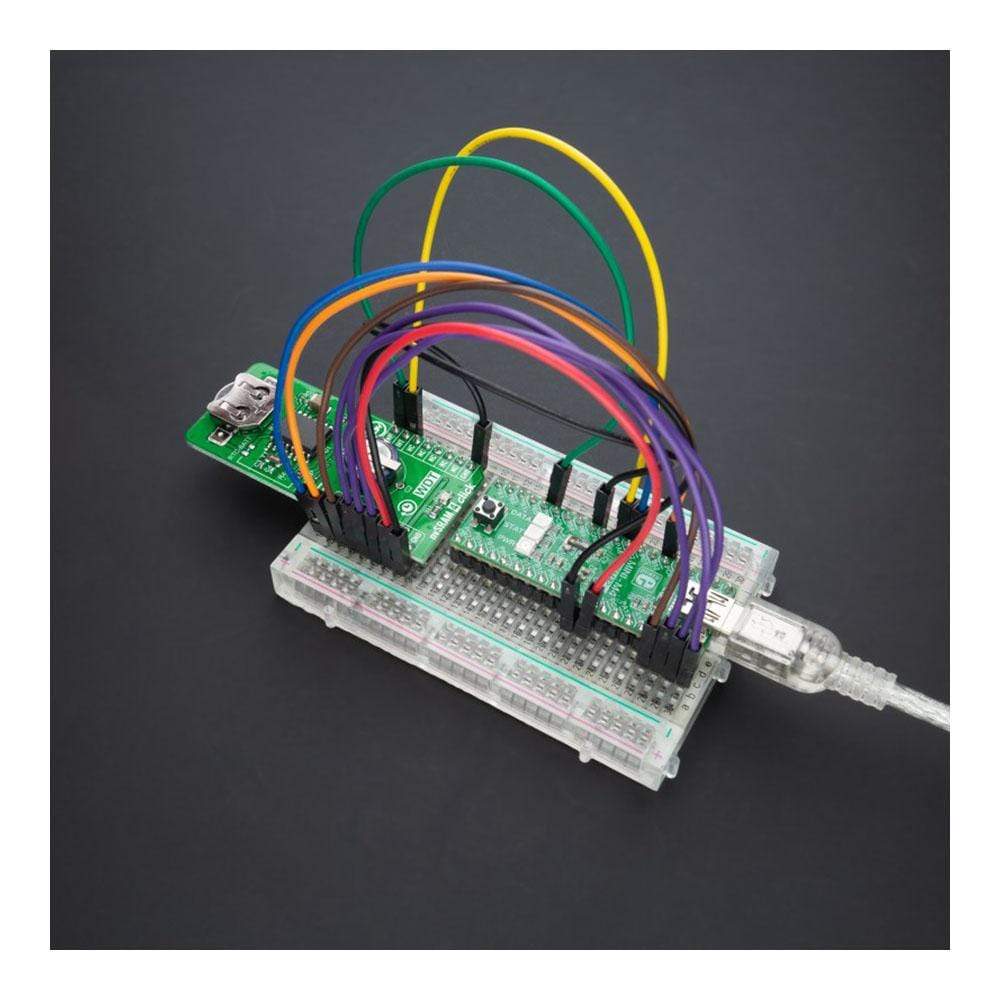
Overview
The nvSRAM 4 Click Board™ is a compact add-on board that contains the most reliable nonvolatile memory. This board features the CY14B101PA, a 1-Mbit nvSRAM with a fully-featured real-time clock from Cypress Semiconductor. The memory is organized as 128K words of 8 bits each, where the embedded elements incorporate the QuantumTrap technology that provides highly reliable, nonvolatile data storage. It provides infinite read and writes cycles with an additional automatic backup switch. Data transfer, initiated by the user through SPI commands, takes place automatically at Power-Down. On the other hand, during the Power-Up, data is restored to the SRAM from the nonvolatile memory. This Click Board™ is suitable for all applications that require fast access and high reliability of stored data, and unlimited endurance.
The nvSRAM 4 Click is supported by a mikroSDK compliant library, which includes functions that simplify software development. This Click Board™ comes as a fully tested product, ready to be used on a system equipped with the mikroBUS™ socket.
Downloads
Le La nvSRAM 4 Click Board™ est une carte d'extension compacte qui contient la mémoire non volatile la plus fiable. Cette carte comprend le CY14B101PA, une nvSRAM de 1 Mbit avec une horloge en temps réel complète de Cypress Semiconductor. La mémoire est organisée en 128K mots de 8 bits chacun, où les éléments intégrés intègrent la technologie QuantumTrap qui fournit un stockage de données hautement fiable et non volatile. Elle fournit des cycles de lecture et d'écriture infinis avec un commutateur de sauvegarde automatique supplémentaire. Le transfert de données, initié par l'utilisateur via des commandes SPI, s'effectue automatiquement à la mise hors tension. D'autre part, lors de la mise sous tension, les données sont restaurées dans la SRAM à partir de la mémoire non volatile. Cette Click Board™ convient à toutes les applications qui nécessitent un accès rapide et une grande fiabilité des données stockées, ainsi qu'une endurance illimitée.
Le NVSRAM 4 Click est pris en charge par une bibliothèque compatible mikroSDK, qui comprend des fonctions qui simplifient le développement logiciel. Cette Click Board™ est un produit entièrement testé, prêt à être utilisé sur un système équipé du socket mikroBUS™.
| General Information | |
|---|---|
Part Number (SKU) |
MIKROE-4482
|
Manufacturer |
|
| Physical and Mechanical | |
Weight |
0.022 kg
|
| Other | |
Country of Origin |
|
HS Code Customs Tariff code
|
|
EAN |
8606027381737
|
Warranty |
|
Frequently Asked Questions
Have a Question?
Be the first to ask a question about this.

